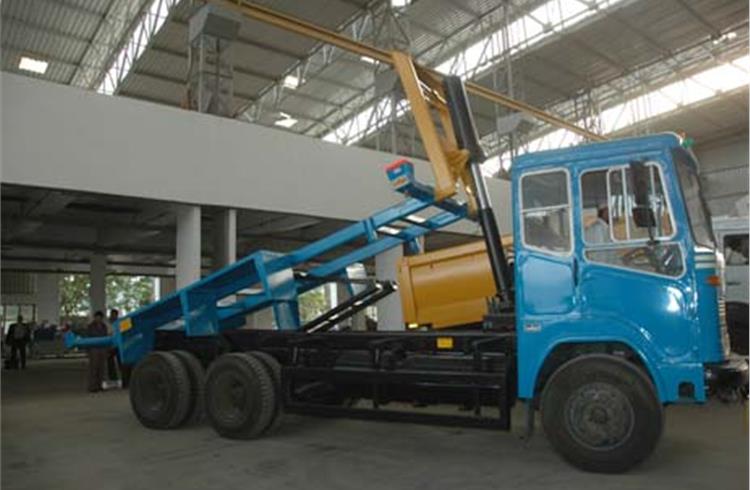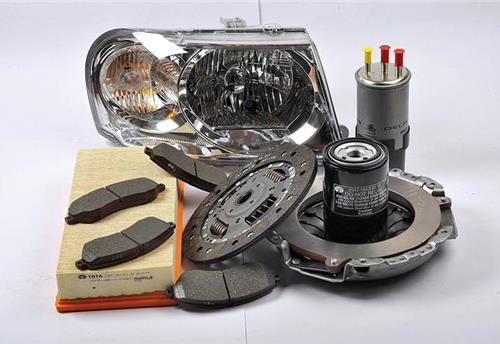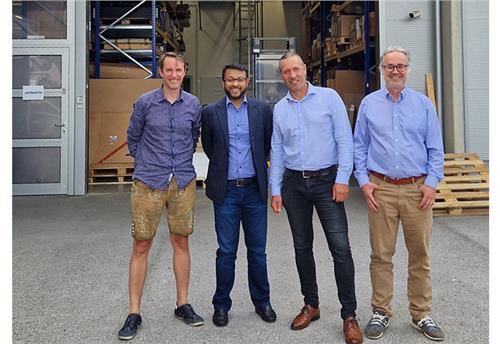Hyva India aims for the skies
The Rs 240 crore company has come a long way since the time it kicked off with five people and a turnover of barely Rs 4 crore, says Ammar Master.
It has been an incredible journey since. Prabhu is still there at the helm of affairs except that the workforce has increased substantially to 600 professionals and technicians. Needless to add, turnover has also seen a huge jump to Rs 240 crore in 2005-06, making it the biggest operation in the Hyva group followed by China. The recently inaugurated plant, again in Navi Mumbai, will double capacity and complement its units in Bangalore and Jamshedpur.
“As per our five-year plan, we are aiming to achieve a turnover of Rs 500 crore by 2008. If we perform as we budgeted which is about Rs 360 crore in 2007, then we feel that it is time we should make another five-year plan,” Prabhu told Autocar Professional in an exclusive interview.
Louwrens Dijkstra, CEO, Hyva Group B.V. is equally optimistic. “There is huge potential in India. We can not only grow our market but also our share here. I would not be surprised if, over the next decade, we double turnover every two to three years because of the sheer potential of the country,” he added.
Obviously, a booming economy and growth in infrastructure has been the best piece of news for the commercial vehicle industry. And Hyva which makes hydraulic tippers and hydraulic cylinders, compressors for cement transport, hydraulic tailgate/tail-lifts, truck-mounted cranes and many other compactors is riding on this growth wave.
Today, the company produces an average of 800 tippers and 1,200 hydraulic cylinders every month. The new Navi Mumbai plant, which will act as its India headquarters, will double Hyva’s annual capacity to 30,000 tippers and 18,000 hydraulic cylinders when it becomes operational in mid-December.
That’s not all. The company is also shifting to a larger plant in Jamshedpur that will cater solely to the requirements of Tata Motors. Sales to Tata form 75 percent of turnover and the latter, is in fact, Hyva’s biggest global customer. “Our Jamshedpur plant will produce about 1,200 tippers for direct supply to Tata’s plant. We will make tippers ranging from 2.5 cubic metres up to 60 cubic metres. The plant will be operational by February 2007,” Prabhu said.
Hyva will also move out of its Bangalore plant to a new facility some kilometers away by April 2007. This unit will make about 400 tippers a month for Volvo, Ashok Leyland and Tatra. In all, Hyva is investing Rs 18 crore in land, building and machinery to increase production.
##### GROWTH FROM CUSTOMERS
Tata Motors, Volvo India and Ashok Leyland are amongst the top ten customers of the Hyva group. It also supplies to DaimlerChrysler’s Actros model as well as Eicher Motors. The company sees more growth with the entry of new players like Asia MotorWorks and MAN-Force Motors.
“AMW for example is selling a little over 100 vehicles per month. We have received Actros orders for about 60 vehicles. MAN-Force Motors is also entering the segment. All this will add to a lot of demand and our turnover,” Prabhu added.
With hydraulic tippers and cylinders comprising 85 percent of turnover, Hyva wants to improve sales of its other products like compressors for cement transport, hydraulic tailgate/tail-lifts and truck-mounted cranes. This explains why it has recruited new area sales managers and sales force. It is also adding another ten dealers by next year to its present tally of 20 across the country.
Dijkstra said that the supply of components forms a major part of the business. “When we came to India, a bodybuilding industry as such did not exist. We built this industry and you are now seeing the number of bodybuilders increasing. This means we are now not only suppliers of complete tippers as we were when we started but also supply components to bodybuilders,” he explained.
The Hyva group has a dual component strategy. One part of it is to source local parts and raw materials for Hyva in India which it does through 40 vendors who provide for example machined and fabricated items. The second part is to source Indian components for Hyva’s global operations. These go to its manufacturing facilities in countries like China, Brazil and Germany. “In every Hyva cylinder independent of where it is made in the world, there are always Indian-made components. We have learned that in India you can source good products of the right specifications at competitive prices,” Dijkstra said.
Along with components, Hyva India also provides tippers to Hyva International which then distributes them to various operations within the group. Exports though are stemmed from a lack in production capacity at the moment. For example, while the demand for hydraulic cylinder kits from India is for around 10,000 a year, Hyva is only able to supply 5,000 kits which translate into to about Rs 50-60 crore in exports.
This is not to say that it’s all hunky-dory in India. There are challenges. “Our challenge comes from very poor infrastructure, a lot of red tape and procedural problems. Even exports can become difficult,” Prabhu said candidly. While poor infrastructure has not particularly dampened the growth in the sector, there is ample room for improvement in India’s roads. The delay in the Golden Quadrilateral and NSEW Corridor does not help matters either. “I only see the Mumbai-Pune expressway and only some good roads in Rajkot. So it is not very encouraging,” he added.
Another major challenge for Hyva, according to Prabhu, is the shortage of talent. “Our growth is stemmed because of a lack of people. That is why we have a library and a gym inhouse. We do a lot of things to make the whole environment friendly,” he explained.
Prabhu further mentioned a company policy called ‘10-80-10’. It means that Hyva must retain and look after the 10 percent cream of the workforce. Then there is the 80 percent average technician, while the company must sieve out the 10 percent deadwood from its workforce every year. “This is the only way we can grow,” he confirms.
RELATED ARTICLES
Tata Elxsi rides transportation growth wave
This rise in the transportation business coincides with a 21.6% jump in Tata Elxsi's net profit to Rs 792.2 crore for FY...
Capex for EV components to exceed Rs 25,000 crore in the next 3-4 years: ICRA
Engine and drive transmission components will be impacted by the EV transition. EV adoption could also have a bearing on...
Naxnova acquires Austria based Advanced Thermal Technologies
This strategic move follows Naxnova's recent acquisition of Belgium-based Quad Industries.





 By Autocar Pro News Desk
By Autocar Pro News Desk
 28 Feb 2007
28 Feb 2007
 6275 Views
6275 Views









